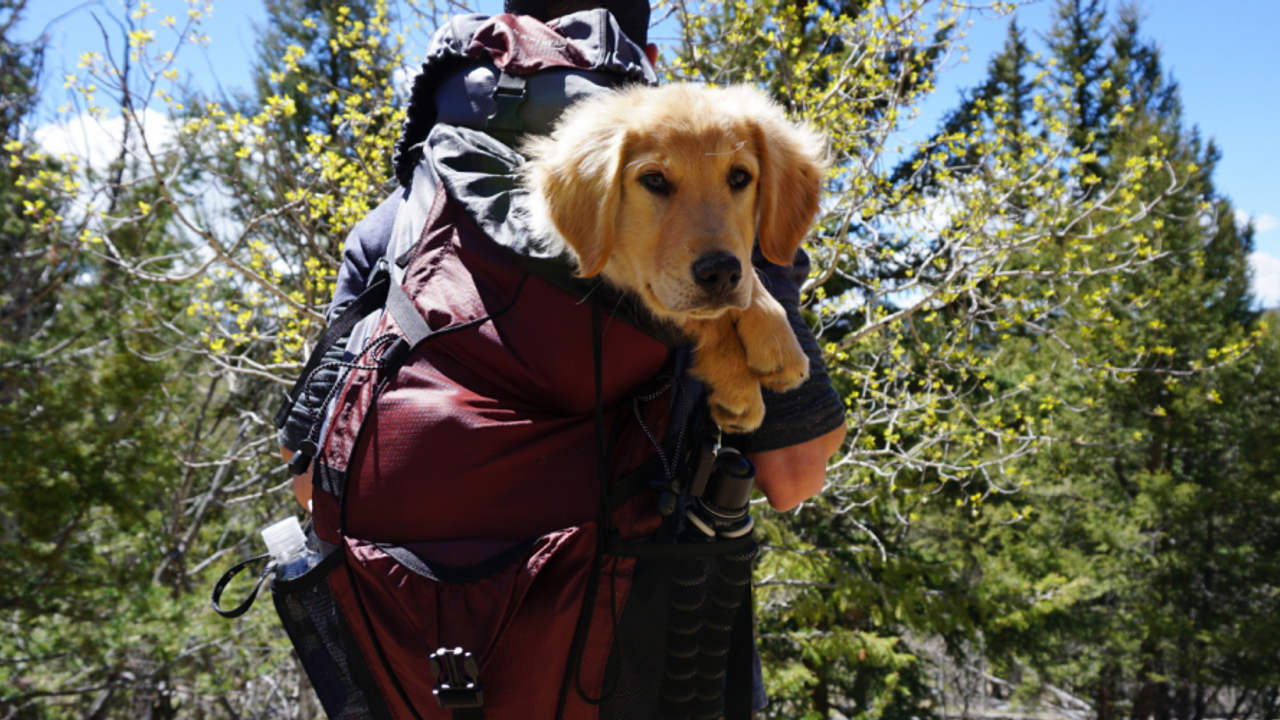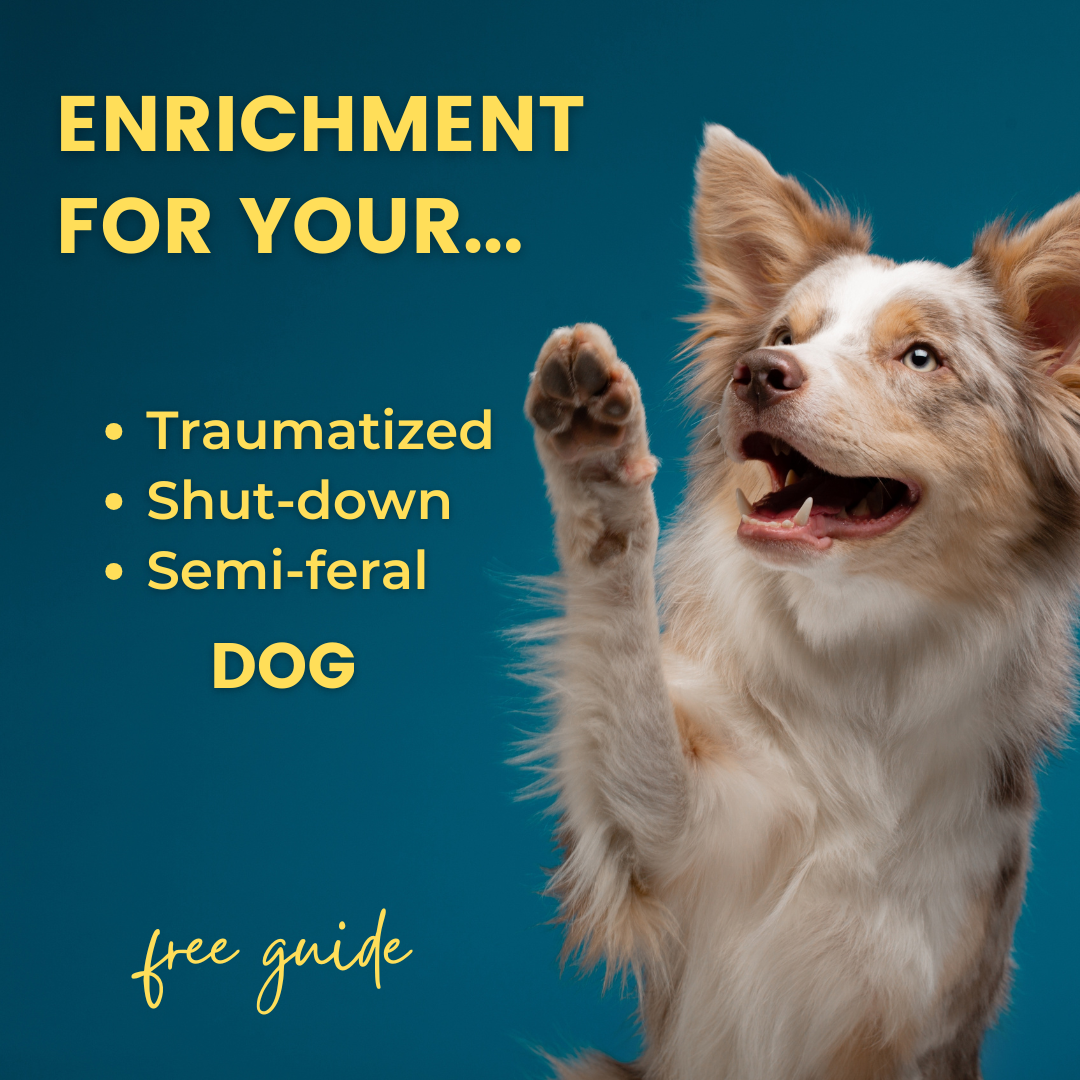
Does your dog panic when you try to carry them in a crate or carrier? Many dogs will have to experience being transported in a carrier at some point. Last week we covered the first steps in carrier training: how to teach your dog to get into a carrier on their own. But just training your dog to get into the carrier isn’t enough. If you try to use the carrier or crate as soon as your dog will get into it willingly, there’s a good chance you’ll undo all of your careful training.
In this week’s video, I show you some of the steps we used to prepare our dog Pancake to be carried around on hikes in his hiking pack. Here are the highlights:
Break Down Jostling, Lifting, and Carrying into Small Steps
When you pick your dog up in a pack or crate, there is always some uneven, unpredictable movement. And then there’s the lifting up into the air, and bumping along as you walk. Throughout all of this, you’d like your dog to stay relaxed in the carrier. The specific behaviors you reinforce are up to you. For example, my goal for Pancake was for him to stay seated or lying down in the pack, with relaxed body language. Here are some ways to break all of this down into manageable steps during carrier training:
- Leave the carrier on the floor, and jostle it a TINY bit. Reward your dog for staying in the carrier;
- With the carrier on the floor, rock it a bit more vigorously;
- Lift the carrier just an inch off the floor;
- Lift the carrier a bit more, but put it right back down;
- Work up to lifting the carrier all the way to the height you’ll need in regular use;
- Take 1 or 2 slow steps, and reward your dog for staying put. Then let them out of the carrier;
- Increase the number of steps you take until your dog can stay settled in the carrier while you walk around the house for a minute or two.
If at any point your dog tries to climb out of the carrier, appears anxious (pinned ears, tense face, lip licking, heavy panting, trembling), or starts hesitating to get into the carrier, you’ve probably pushed ahead too quickly. Stop and back up to a step in carrier training your dog can do easily.
Include Important Locations, People, and Activities in Carrier Training
When your dog will happily ride around the house in their carrier, it’s time to start adding in details that will bring you closer to “real life” use of the carrier. For example:
- Where do you expect to carry your dog? On the hiking trail? In an airport? At the vet’s office? Include these or. similar locations in your carrier training;
- Will there be other people nearby when your dog is in the carrier? Other dogs? Make sure you practice carrying your dog around people and dogs;
- How will you carry the carrier? On your back, over your shoulder, on your chest, from a handle? Make sure to include all the carrying methods you plan to use, in your carrier training.
Training Should be Fun
The most common mistake to watch for with carrier training, is moving too quickly. You’d like your dog to be eager to train, and happily engaged with the process. If you leave the carrier out, does your dog climb into it, hoping for treats? That’s a good sign that you’ve successfully reinforced getting into the carrier, and paired it with good things. If your dog moves away when you put the carrier down, that’s a warning sign that maybe it’s time to go back to training steps your dog can do easily.
If you have a sensitive pup and would like a trainer on hand to guide you and answer your questions, join our monthly training membership, or sign up for private training, and get the support you need.
If you try these tips and have success, or trouble, we want to hear from you. Join our Facebook group and post your questions or comments there, or reach out to us by email at [email protected]!
Categories


Have a dog who is too anxious to have fun? Grab this free guide & video lesson all about how to teach your extremely fearful dog their 1st enrichment game.


Community
We offer a free private Facebook support group for owners of fearful dogs to connect and share their stories. Join us there.


